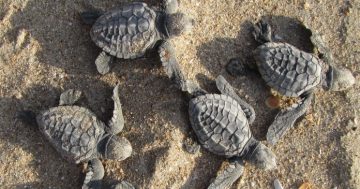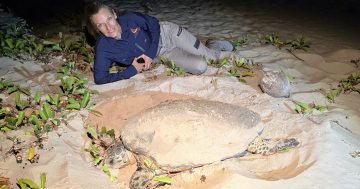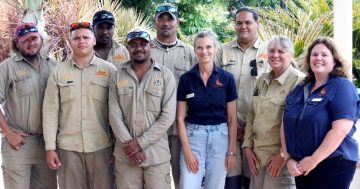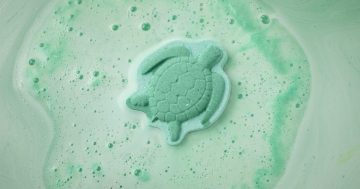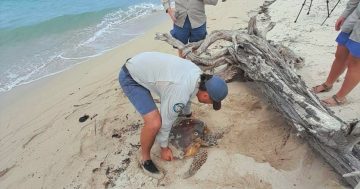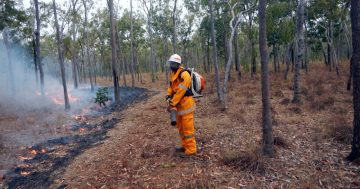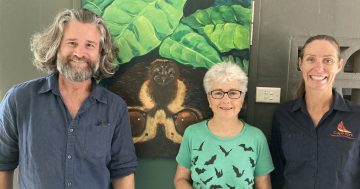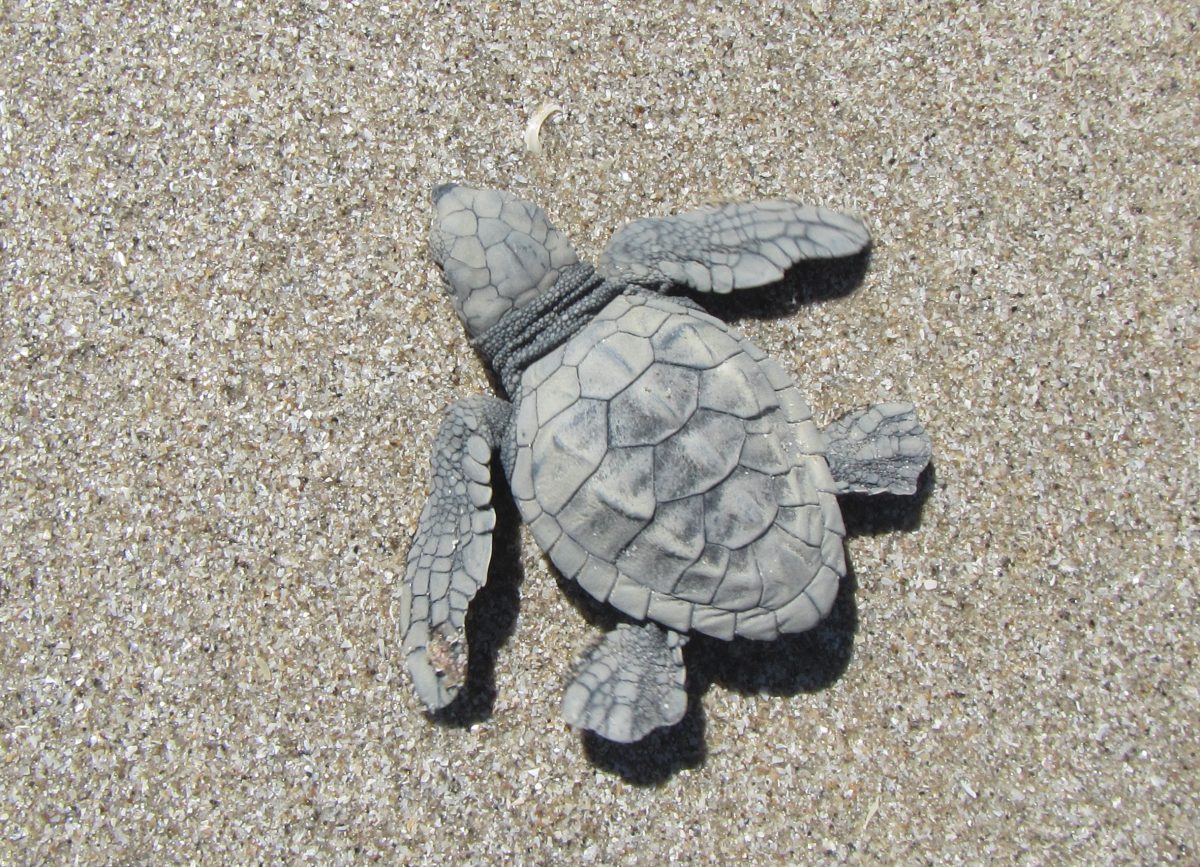
A turtle hatchling at Pormpuraaw.
IT’S tough being a turtle, but on Cape York’s western coast, a team of superheroes working hard to protect these threatened species has just been given a share of $4.5 million to boost their efforts.
When rising temperatures began to threaten the turtles, the Western Cape Turtle Threat Abatement Alliance launched into action to counteract this latest concern for the turtle species which nest along the Cape’s secluded beaches.
WCTTAA has been working to protect turtles on the western Cape for the past decade and are now introducing ways to shade nests and lower sand temperatures as part of their annual program.
The Federal Government this week announced funding to Cape York Natural Resource Management to support WCTTAA in modifying turtle nests as part of a nationwide $4.5 million investment in community projects to better protect oceans and the precious species that call them home.
“Warming temperatures are producing more female hatchlings which jeopardises the Olive Ridley population,” CYNRM WCTTAA coordinator Dr Manuela Fischer said.
“We will be trying to influence the sex ratios of Olive Ridley hatchlings to maintain a balance.”
Rangers will install shade over nest cages as well record sand temperatures during the nesting season.
The results of the new project won’t be released until hatchlings reach breeding age in 15 to 30 years’ time and return to their nesting beaches.
“Protection is long-term,” Dr Fischer said.
“The communities along western Cape York are committed and work tirelessly each year to keep these endangered species safe.”
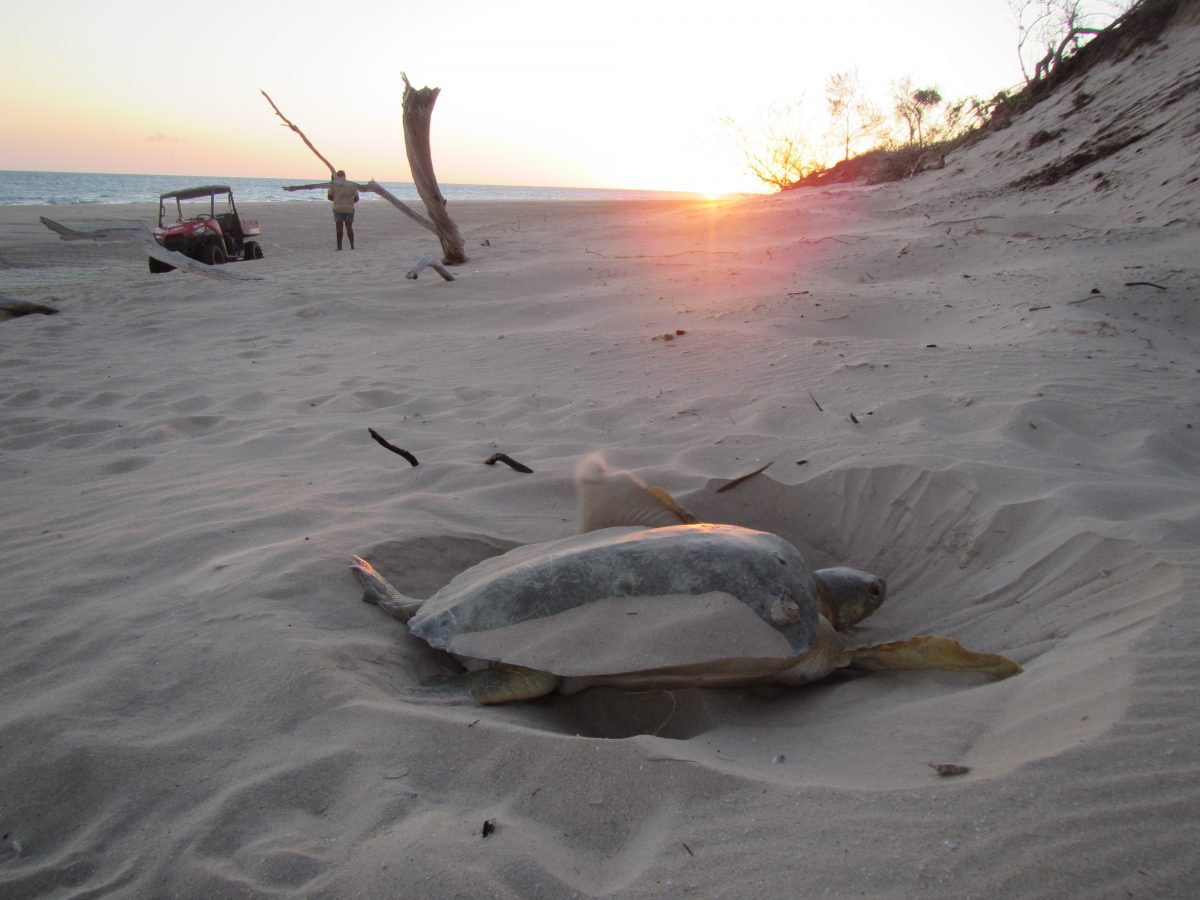
Turtle nests at Crab Island beach will be among those protected.
Seven key beaches are protected by WCTTAA – Crab Island, Jardine River, Skardon River to Namaleta Creek, Flinders Beach, Pennefather Beach, Hersey Creek to Christmas Creek and Christmas Creek to Balurga Creek.
WCTTAA is a partnership of six on-ground Indigenous land and sea owners and managers supported by CYNRM.
Its annual turtle nest protection program covers Olive Ridley, Flatback, and some Hawksbill and Green turtle nests along the coastline of Western Cape York.
WCTTAA’s work has successfully reduced turtle nest predation from 90 per cent to 10 per cent or less with purpose-built, rust-proof cages installed over nests to prevent feral animals from attacking the eggs.
Rangers also remove marine debris, monitor the beaches and enter nest and hatchling data, carry out pre-season culling of feral animals, and conduct education campaigns about beach driving and camping while nests are present.


